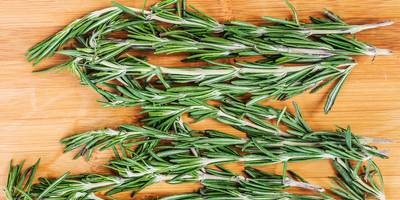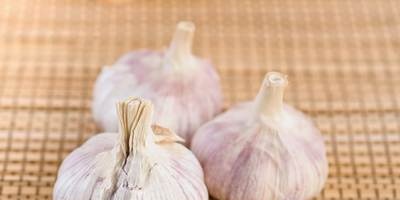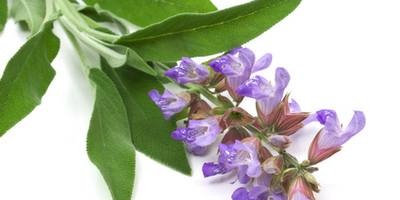|
 “Since the Romans, in their travels and wars, first learned the charm of spicy and intoxicating, tart and heady oriental spices, the West can no longer and does not want to do both in the kitchen and in the cellar without (expeceria) Indian spices, without spices ", - wrote Stefan Zweig in the book" Magellan ". “Since the Romans, in their travels and wars, first learned the charm of spicy and intoxicating, tart and heady oriental spices, the West can no longer and does not want to do both in the kitchen and in the cellar without (expeceria) Indian spices, without spices ", - wrote Stefan Zweig in the book" Magellan ".
True, people on other continents, long before the Roman campaigns, flavored food with spicy vegetables and plants. Since ancient times, onions and garlic, cumin and saffron, bay leaves and other spicy plants. Even the ancient Egyptians used garlic for food, which became so famous not only for its taste, but also for its healing effect that later it was deified and the use of garlic for food was forbidden to ordinary mortals. Long before Columbus discovered America, the Indians who lived there knew vanilla, red pepper and other spices.
But European food from the early Middle Ages was extremely bland.
However, it became clear: it is worth adding a grain of pepper, a pinch of nutmeg color and a miracle immediately happens: the tasteless becomes tasty.
Spices have gained value. There was a need for them. In those days, only Arabs traded in spices and sold them at fabulous prices. It was known that they grow in distant, fabulous India or on the unknown "spice islands", where the Europeans did not know the way. Christopher Columbus set off on his first voyage with only one purpose: to find a sea route to India. “I do my best to get where I can find gold and spices,” reads an entry in his diary.
Columbus did not get to India. I didn't find any spices. The sea route to India was discovered by Vasco da Gama only at the very end of the 15th century. The Portuguese and the Spaniards rushed in search of the mysterious "spice islands", followed by the Dutch and the British. One of the first Fernand Magellan turns to the Portuguese king with a proposal to organize a sea expedition to the "Spice Islands". This proposal was accepted only in 1518, and not by the Portuguese, but by the Spanish king Charles I. Here is what the crowned ruler of Spain wrote to Magellan: “Since I know for certain that there are spices on the Molucco Islands, I send you mainly in search of them and mine the will is that you go straight to these islands. " The group of the Moluccas of the Malay Archipelago has long been famous for the cultivation of cloves and nutmeg, coffee and cocoa, sago palm and other equally outlandish plants. It is not for nothing that these islands were called Moluccas: after all, the word molos means in Malay - the most important thing. From now on, they have become "the most important" for the Europeans as well.
Discovered in the early 17th century by the Portuguese, the Moluccas were soon captured by the Dutch, who organized the "famous" East India Trading Company. Centuries of colonial slavery and plunder began by the Malays, and caravans of ships laden with cloves and peppers, nutmeg and cinnamon, furrowing the seas and oceans, sailed to Europe ... Most of the spicy plants grow in countries of tropical climates. But there are many spices and representatives of the temperate and subtropical climate. Our Transcaucasia, especially Georgia, is also rich in spicy plants.
 The nutritional value of spices is low: they contain relatively little proteins, fats and carbohydrates. Except for pepper, mustard and some other spices with a sharp bitter taste, most of them are valued for their special unique aroma. The nutritional value of spices is low: they contain relatively little proteins, fats and carbohydrates. Except for pepper, mustard and some other spices with a sharp bitter taste, most of them are valued for their special unique aroma.
The bitter taste that some spices have is due to the content of special substances in them - alkaloids and glucosides.Alkaloids are complex nitrogenous compounds of plant origin that have a strong physiological effect on the body. Alkaloids, in particular, include piperine of black pepper, caffeine of tea and coffee, cocoa and chocolate theobromine, which have already been mentioned.
Glucosides are made up of glucose (or other simple sugar) and a non-carbohydrate moiety. Nature has created countless organic compounds, which only in a complex and varied combination form one or another spicy aroma. Mixtures of these odorous substances are usually called essential oils, the content of which in spices is small - from 2 to 7 percent. Only cloves are an exception: they contain up to 18 percent of essential oil.
What are spice essential oils made of? Recently, it has been established that the aroma of spices is formed by up to 200 different volatile compounds. Here are some of the most important components. For example, caraway and dill oils contain alcohol, menthol, and a chemical, carvone. Pinene ikamfen, borneol alcohol, camphor, etc. are present in nutmeg and bay leaves. Cinnamon essential oil contains up to 93 percent of cinnamaldehyde, which is currently produced synthetically.
Some components of essential oils, nutmeg, bay leaves, caraway seeds, anise, cloves, mustard also have bactericidal, i.e. preservative, properties. Only saffron, in addition to its aroma, also serves as a coloring agent.
Chemicals accumulate in different parts and organs of plants: in peppers - in fruits, in a carnation - in flower buds, in a laurel - in leaves, in ginger - in a rhizome, in a cinnamon tree - in a bark, etc. And therefore they use this fruits, then seeds, then leaves, then flower buds. The first place among spices belongs to pepper. A peppercorn was valued almost its weight in gold. They paid with pepper instead of money. No wonder, wishing to emphasize the wealth of some eminent merchant, he was called a "bag of pepper".
Distinguish: black, white, red and allspice. Black and white peppers are the fruits of the same tropical plant from the pepper family, a climbing perennial crop (such as lianas), cultivated mainly in Indonesia - on the islands of Sumatra, Borneo, Java, Ceylon.
The fruits of the pepper are picked unripe, soaked in sea or lime water and dried. If the fruits are removed in an unripe state, then after processing they acquire a dark brown or almost black color. This is black pepper. If the fruits are removed when ripe, then after drying they acquire a yellowish-gray color. This pepper is called white: it has a less pungent and milder taste. The bitterness and pungency of pepper are primarily determined by the content of about 7 percent of the alkaloid piperine.
Even more pungent and pungent in taste is paprika. It grows not only in exotic countries, but is successfully cultivated in Bulgaria, Hungary, southern Ukraine, the North Caucasus, and the Transcaucasus.
Red pepper belongs to the family of nightshades and, therefore, is a close relative of potatoes, tomatoes, tobacco. As a spice, dried and powdered pepper pods are used. The active principle of red pepper is capsaicin, which has a pungent taste and strong irritating properties. A drop of water containing only 5 ppm of a gram of capsaicin can cause intense burning.
 There is little capsaicin in sweet peppers, but about 1 percent in hot peppers. While black, white and red peppers are valued for their inherent pleasant bitterness and pungent pungency, the value of allspice is in its excellent balsamic aroma. There is little capsaicin in sweet peppers, but about 1 percent in hot peppers. While black, white and red peppers are valued for their inherent pleasant bitterness and pungent pungency, the value of allspice is in its excellent balsamic aroma.
Allspice is the dried unripe fruit of a tropical tree from the myrtle family. Most of all allspice grows on the island of Jamaica. The main component of this pepper is eugenol, which is found in the essential oil of many spices, especially cloves.Therefore, clove and allspice have similar aromas.
Everyone knows that mustard is bitter, but mustard also has a sharp taste. Strictly speaking, there is no sharp or pungent taste in nature, just as there is no greasy, metallic, pungent and similar tastes. The natural bitter taste of mustard and pepper is also joined by side tactile, or, as they say, tactile sensations - sensations of pressure, pain, heat, which arise when the mucous membranes and nerve endings are irritated by certain chemicals.
Mustard - a plant of a temperate climate. This is an oilseed crop. It is cultivated to obtain mustard oil, which is used not only as a seasoning for salads and other dishes, but also in the production of medicines and perfumery. Low-fat seeds (cake) are ground into a fine powder, from which table mustard is prepared.
There are three types of mustard: white, black and gray. We grow mainly gray. Its seeds contain sinigrin glucoside, which completely transforms into mustard powder and determines the taste of mustard. To prepare mustard, the powder is mixed with warm water and, under the influence of enzymes, sinigrin breaks down and allyl - mustard oil is released. It is a substance with a characteristic pungent odor and irritating tears. When it gets on the skin and mucous membranes, it causes redness, pain and severe burning. This actually determines the taste of mustard. Allyl mustard oil is also included in horseradish, which gives it a pungent bitter taste and tearing effect.
Who doesn't know the delicate, subtle scent of vanilla? It was awarded to a butter pretzel, a bar of chocolate and a glass of refreshing cream soda. One cannot do without it not only in cooking and confectionery production, but also in the perfumery and distillery industry, in a word, wherever it is necessary to give products a specific vanilla smell.
Vanilla Are dried fruits, pod-like capsules of a tropical plant from the orchid family. The homeland of vanilla is Mexico. It is bred in Western India, Ceylon, Java and other tropical countries. This plant leads a parasitic lifestyle: clinging and entangling the trunk of a tree with its aerial roots, it feeds on its juices. In the process of life, vanilla accumulates glucovanillin in its fruits - a substance that forms a unique aroma.
Vanilla fruits (pods) are subjected to simmering (fermentation), then dried in the sun, after which they acquire a black-brown color. Vanillin in dried pods contains from 1.5 to 3 percent. That's not a lot.
Chemistry has transcended nature. And when the chemical structure of vantine was established, they tried to synthesize it. Recently, they began to produce vanillin even from wood containing a special substance - lignin. When oxidized, lignin turns into vanillin, a white crystalline powder. Just think, 20 grams of synthetic vanillin replaces a kilogram of vanilla sticks! So synthetic vanillin has almost completely replaced natural vanilla. We can continue our conversation about the various spices widely used in the manufacture of dishes and confectionery, and about the ways of their penetration into food. But it is quite obvious that spices create a wide variety of taste sensations and, of course, it is not for nothing that in ancient times the addition of various parts of plants to food was very popular.
Let us recall that spices include products of plant origin, used to improve the taste and aroma of food and increase its digestibility. These properties of spices are due to the content of essential oils and insular substances.
Spices are classified according to those parts of plants that are eaten: seeds - mustard, nutmeg, anise; fruits - cardamom, pepper (allspice, white and green pepper), vanilla, star anise, caraway seeds, dill; flowers and their parts - carnation, saffron, capers; leaves - bay leaf, marjoram, savory, dill, parsley, tarragon; bark - cinnamon; roots - ginger, licorice root.
We must not only forget that spices easily perceive extraneous odors, therefore they should not be stored with sharp-smelling, equally leaky sealed spices, in turn, can transmit their smell to others who easily perceive the smells of the product.
The assortment of spices used in cooking and food industry is huge. And how many new, unexpectedly useful spices for humans are hidden in our world.
Moderate consumption of spices, wrote the great Russian physiologist I.P. Pavlov, is not a whim, but an urgent need, since the taste properties of food and its smell stimulate the appetite and promote better digestibility of food.
Volper I. N. Legends and be about products.
|
 “Since the Romans, in their travels and wars, first learned the charm of spicy and intoxicating, tart and heady oriental spices, the West can no longer and does not want to do both in the kitchen and in the cellar without (expeceria) Indian spices, without spices ", - wrote Stefan Zweig in the book" Magellan ".
“Since the Romans, in their travels and wars, first learned the charm of spicy and intoxicating, tart and heady oriental spices, the West can no longer and does not want to do both in the kitchen and in the cellar without (expeceria) Indian spices, without spices ", - wrote Stefan Zweig in the book" Magellan ". The nutritional value of spices is low: they contain relatively little proteins, fats and carbohydrates. Except for pepper, mustard and some other spices with a sharp bitter taste, most of them are valued for their special unique aroma.
The nutritional value of spices is low: they contain relatively little proteins, fats and carbohydrates. Except for pepper, mustard and some other spices with a sharp bitter taste, most of them are valued for their special unique aroma.







